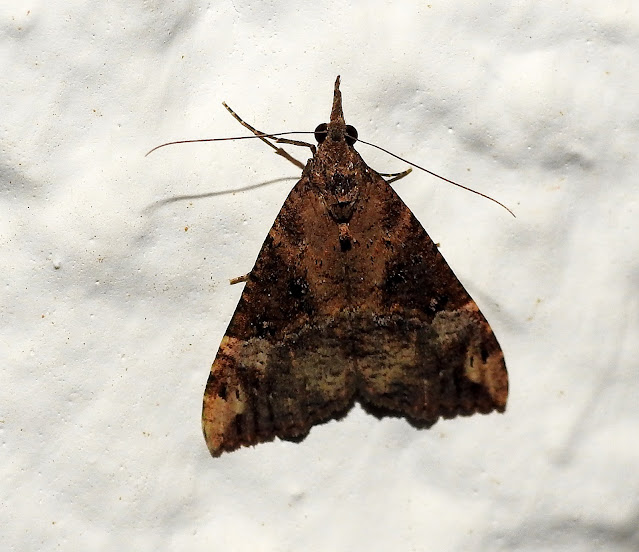This Blog contains Wildlife and Bird Photos from Walks, Safaris, Birding Trips and Vacations. Most of the pictures have been taken with my Nikon P900 and P950X cameras. On the right of the page are labels for each species of Bird/Animal etc. Click on a label to show all of the photos taken for that species. Information for each species is from Wikipedia. Just click on any image for a large picture.
TOTAL PAGEVIEWS
TRANSLATE
Sunday, 3 April 2022
Saturday, 2 April 2022
Friday, 1 April 2022
Thursday, 31 March 2022
Wednesday, 30 March 2022
Tuesday, 29 March 2022
Monday, 28 March 2022
Sunday, 27 March 2022
6-6-2019 KHWAI CAMP, BOTSWANA - NILE MONITOR (Varanus niloticus)
The Nile monitor (Varanus niloticus) is a large member of the monitor family (Varanidae) found throughout most of Sub-Saharan Africa and along the Nile, with invasive populations in North America. The population in West African forests and savannahs is sometimes recognized as a separate species, the West African Nile monitor (V. stellatus). It is one of the largest lizards in the world reaching and even surpassing the perentie by size. Other common names include the African small-grain lizard, as well as iguana and various forms derived from it, such as guana, water leguaan or river leguaan (leguan, leguaan, and likkewaan mean monitor lizard in South African English, and can be used interchangeably). A feral population of the lizards, descended from escaped or intentionally released pets, has become established in several locations in Florida.
Nile monitors are native to Sub-Saharan Africa and along the Nile. They are not found in any of the desert regions of Africa (notably Sahara, Kalahari and much of the Horn of Africa), however, as they thrive around rivers. Nile monitors were reported to live in and around the Jordan River, Dead Sea, and wadis of the Judaean Desert in Israel until the late 19th century, though they are now extinct in the region.
Nile monitors are often found in the pet trade despite their highly aggressive demeanor and resistance to taming. Juvenile monitors will tail whip as a defensive measure, and as adults they are capable of inflicting moderate to serious wounds from biting and scratching. Nile monitors require a large cage as juveniles quickly grow when fed a varied diet, and large adults often require custom-built quarters.
"There are few lizards less suited to life in captivity than the Nile monitor. Buffrenil (1992) considered that, when fighting for its life, a Nile monitor was a more dangerous adversary than a crocodile of a similar size. Their care presents particular problems on account of the lizards' enormous size and lively dispositions. Very few of the people who buy brightly-coloured baby Nile monitors can be aware that, within a couple of years, their purchase will have turned into an enormous, ferocious carnivore, quite capable of breaking the family cat's neck with a single snap and swallowing it whole."
6-6-2019 KHWAI CAMP, BOTSWANA - WATER THICK NEE (Barhinus Vermiculatus)
The water thick-knee or water dikkop (Burhinus vermiculatus) is a species of bird in the thick-knee family Burhinidae. The species is found across sub-Saharan Africa, usually close to water.
The water thick-knee has a widespread distribution in sub-Saharan Africa, being found in Angola, Botswana, Burkina Faso, Burundi, Cameroon, Central African Republic, Republic of the Congo, Democratic Republic of the Congo, Eswatini, Ivory Coast, Ethiopia, Gabon, Ghana, Kenya, Liberia, Malawi, Mozambique, Namibia, Niger, Nigeria, Rwanda, Senegal, Somalia, South Africa, Tanzania, Uganda, Zambia, and Zimbabwe.
Across its range it is found on the edges of lakes, estuaries and rivers, as well as mangroves and also some sheltered beaches. It also needs bushes or nearby woodlands for shelter. It is found from sea-level to 1,800 m (5,900 ft).
The water thick-knee is a terrestrial feeder that forages at night. Although it is typically associated with water it can be found foraging up to 1 km (0.62 mi) from water. It feeds on insects, crustaceans and mollusks.
The water thick-knee generally breeds in the dry season or early rainy season. It is a monogamous breeder with both parents guarding the nest and brooding the eggs. The nest is a simple scrape in sandy or stony ground, usually close to water. The clutch size is two sandy-yellow eggs. Both sexes incubate the eggs for 22-25 days, and both are responsible for feeding the young. Unique among birds, thick-knee pairs frequently nest adjacent to and sometimes directly on top of Nile crocodile nests. The two species share a form of symbiotic mutualism with the more energetic and vocal thick-knee functioning as loud sentries for the nests as the more powerful crocodile provides protection. Should a nest raider approach, the thick-knee pair will spread their wings in a threat display and harass and peck at the intruders to drive it off. If the pair not be successful, the mother crocodile will be drawn in by their continued calls and arrive.
Saturday, 26 March 2022
Subscribe to:
Posts (Atom)
%201.jpg)
%202.jpg)







%201.jpg)
%201.jpg)
%202.jpg)
%203.jpg)
%205.jpg)
%206.jpg)
%2014.jpg)
%2020.jpg)
%20%201.jpg)
%20%202.jpg)
%20%204.jpg)


%2010.jpg)
%2020.jpg)
%2021.jpg)


%2010.jpg)








%2014.jpg)
%2015.jpg)
%209.jpg)
%2010.jpg)
%2011.jpg)
%2012.jpg)
%2014.jpg)
%2015.jpg)
%2016.jpg)
%2017.jpg)
%2019.jpg)


%2010.jpg)
%2011.jpg)